EXCLUSIVE: How Blackmark, the first American graphic novel, and Green Lantern/Green Arrow are forever entwined…
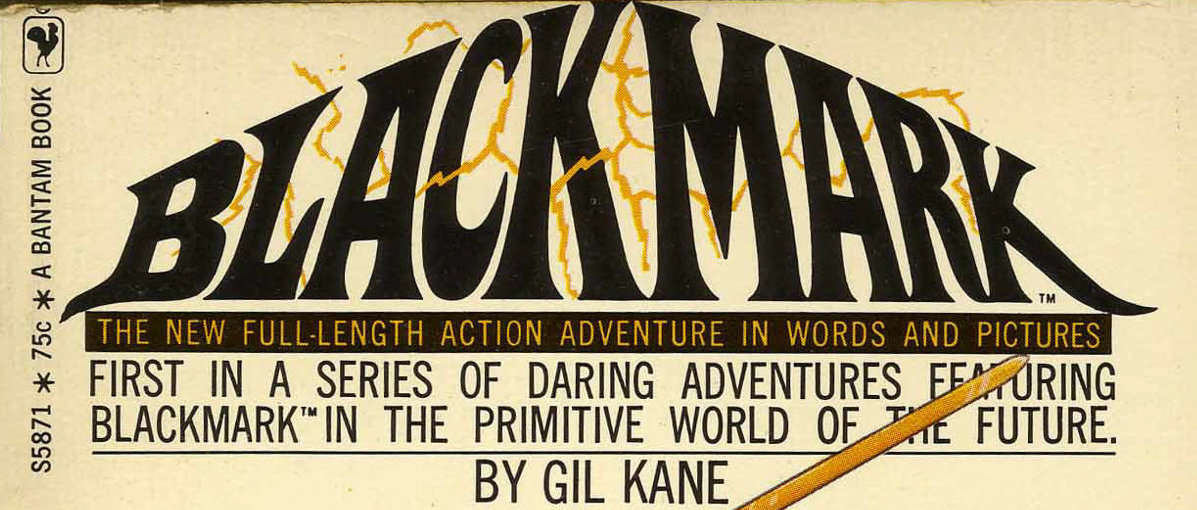
Life is filled with crossroads, only we don’t always recognize those moments as they occur. But in retrospect, what appeared to be coincidence reads like destiny.
Neal Adams, as it happens, has a surprising connection to fellow artist Gil Kane that is coming full circle with Adams’ planned sale of Kane’s original cover art for the 1971 comics touchstone Blackmark, widely considered the first American graphic novel.
But Blackmark’s legacy is more than you likely know. Beyond pioneering a new form in its own right, Kane’s project inadvertently led to a seismic change in mainstream comics — namely, Adams and Denny O’Neil’s groundbreaking run on Green Lantern in the early ’70s and the rise of the Bronze Age.
“There’s a circus of the industry that goes around me. So many things have happened in so many ways. There are so many stories that you just wouldn’t believe it. And on a personal level, on all kinds of levels, I’ve had a helluva career and here’s just an incident,” Adams said in a new interview, referring to Blackmark and the significance of its cover. “That moment changed the industry. That piece. Changed the industry of graphic novels. Changed the industry in the kind of comics we do.”
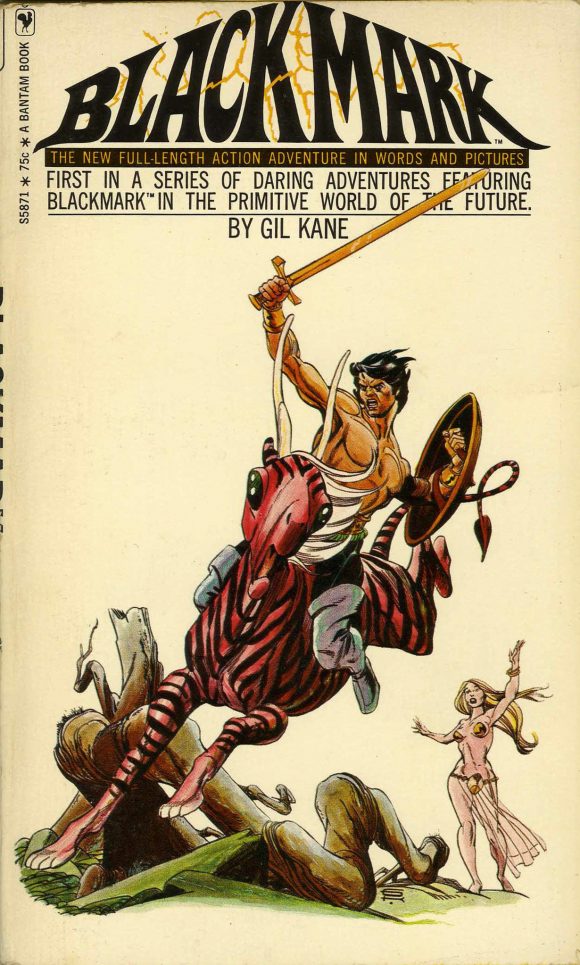
To get the full scope of the tale, you have to go back to the 1950s, when Adams was a student at New York’s School of Industrial Art (now the High School of Art and Design) and DC’s Sol Harrison came to speak. Harrison, Adams recalled, told the students that comic books would be gone within a year and that they were better off setting their sights elsewhere. Still, Harrison came bearing gifts — pages of original art. Adams scored a sci-fi page that was credited on the back to “Eli Katz” — which, the teen would learn, was Gil Kane’s real name.
Adams became a big fan and, later, was particularly taken by Kane’s pencils on Green Lantern, which was brought back as part of DC’s move to revitalize the superhero genre. Within a decade, after Adams broke into the field, he and Kane grew to be colleagues and friends — Adams was reaching the heights of comics stardom and Kane was long one of the industry’s most respected artists, known for superb anatomy and dynamic action.
Now, if you believe in fate, get this: As the ’60s waned, Kane told Adams about his desire to do a comic done in the European style — an illustrated, book-length adventure that would not have to adhere to the demands and restrictions of American monthly comics. Kane landed a deal with Bantam Books for Blackmark — a sci-fi/sword-and-sorcery epic scripted by Archie Goodwin from a Kane outline. (Adams also assisted on the project.)
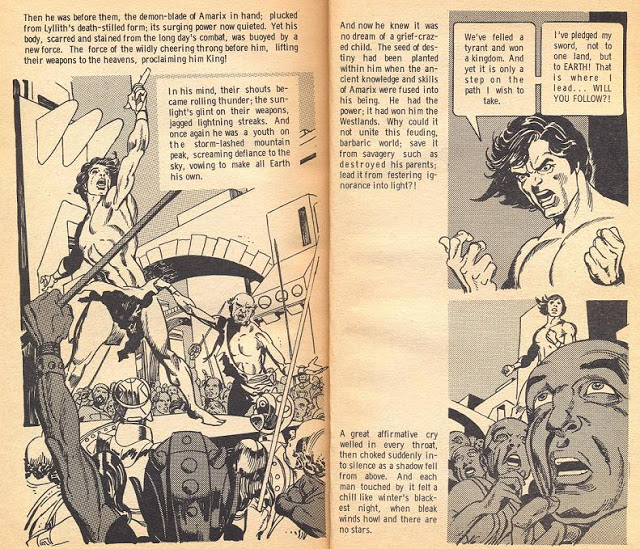
Blackmark interiors
Kane departed Green Lantern (which he’d left once before) and Adams begged editor Julius Schwartz to do just one issue. Schwartz replied the series was due for cancellation, Adams recalled, but the artist was undeterred. Eventually, Schwartz decided to give Adams a shot — but added two twists: the story needed to include Green Arrow, whom Adams had reinvented not long before in The Brave and the Bold, and the artist would be paired with a young writer who had a great feel for realistic storytelling — Denny O’Neil.
In February 1970, the groundbreaking Green Lantern #76 was published, heralding the age of relevance in mainstream American comics by tackling issues such as race, drugs, environmental preservation, predatory big business and other heady topics.
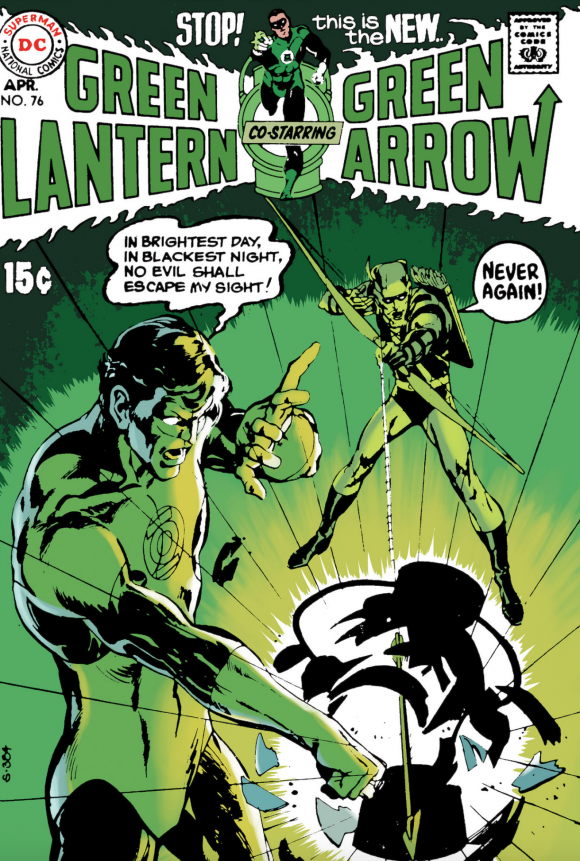
Meanwhile, less than a year later, Kane’s Blackmark was published — a quieter, yet no less seismic event.
That might have been that except years later, Adams was gathering art for a fundraiser, and Kane (who died in 2000) had some to offer.
“Gil had come in with a bunch of pieces and he showed me the Blackmark cover and I said, ‘You can’t sell this.'” Adams recalled. “He said, ‘You want it?’ I said, ‘God, yeah.’ And he handed it to me.”
Adams has held onto it ever since.
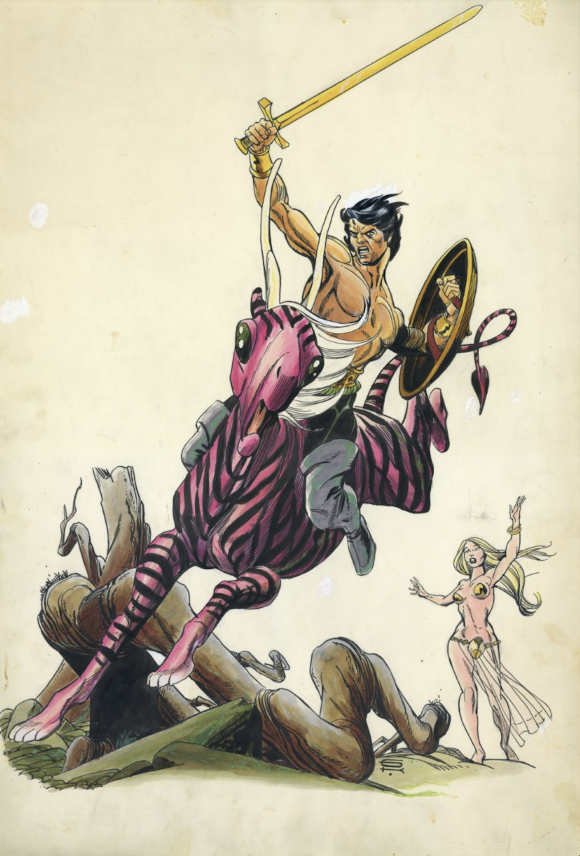
Kane’s original Blackmark cover art
“That’s the first cover for a graphic novel in America,” Adams said. “I’ve even showed it to people and they say, ‘It’s not one of his best covers.’ Yeah, I agree. OK, so what? Compared to its significance — that’s a different story.”
Regardless of whether it’s his best, the image is indelibly Kane — with its sinewy anatomy, perspective and bold kineticism.
“It’s what I’ve loved about Gil Kane since I was in high school,” Adams said. “I’m giving up a dream because I haven’t done anything with the piece and I honestly don’t think I deserve it. I’d like to get it to a place that, hopefully, shows it.”
It’s a matter of finding a buyer.
Declining to go the auction-house or art-dealer route, Adams wants to sell directly to a collector who will appreciate the meaning and impact of the Blackmark cover. He’s already shown it off during his twice-weekly Facebook Live auctions, which are held on Tuesday and Friday evenings about 6 p.m.
If you’re seriously interested, you can contact Adams’ Continuity Studios at 212-869-4170.
And who knows? If the fates are smiling, you might get to talk to Adams about two artists, two projects and how comics were changed forever.
—
MORE
— NEAL ADAMS Reveals What Inspired Him When He First Drew TALIA AL GHUL. Click here.
— STAR HAWKS: The Comic-Strip Brilliance of GIL KANE. Click here.

June 5, 2021
Didn’t know. Big Gil Kane fan, and what a cool story. Nice to hear of Neal’s reverence for Kane. If I had the money. But then that’s true for lot’s of things.
June 5, 2021
Great story! I didn’t know about this book, but I was immediately reminded of Gil Kane’s work on Sword of the Atom when I saw the Blackmark cover
June 5, 2021
It’s really awesome to hear about artists respecting each other.
June 5, 2021
It is definitely NOT the first American graphic novel. That would be Arnold Drake’s and Matt Bakers’ “It Rhymes With Lust” graphic novel published by St. John Publications in 1950. Blackmark is not groundbreaking and it is not the first graphic novel at all.
June 7, 2021
I hadn’t considered this paperback as a graphic novel…but hell, why not? 1971? Predates Eisners ‘The Dreamer’ or even that McGregor/Gulacy thing…Sabre?
June 12, 2021
Blackmark may not be the first graphic novel, but it is groundbreaking as the first fantasy graphic novel published in America.